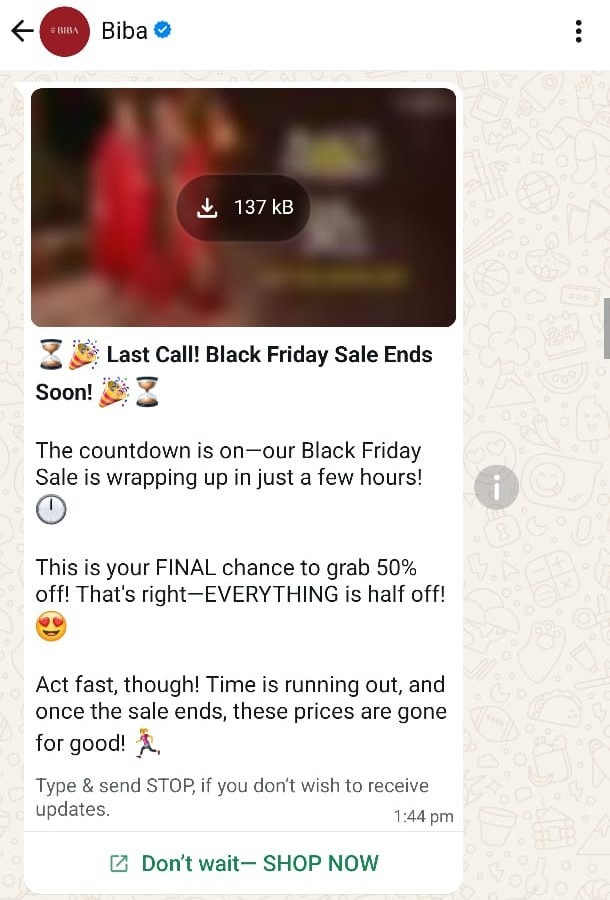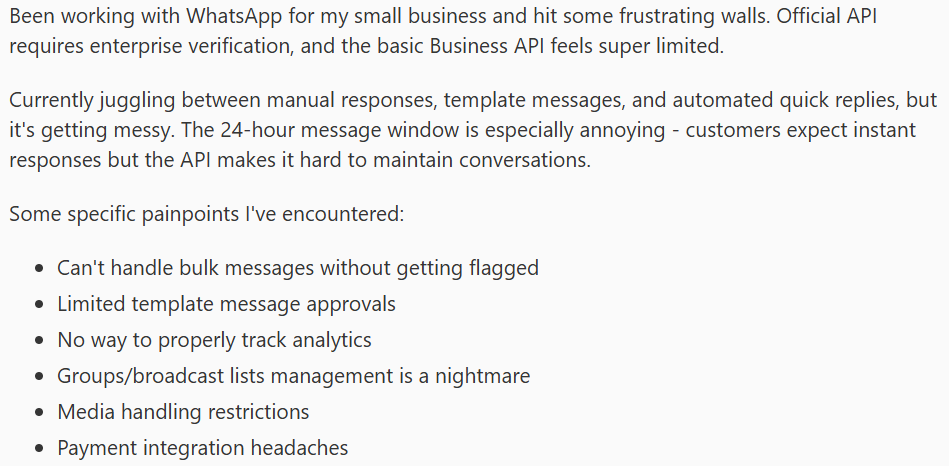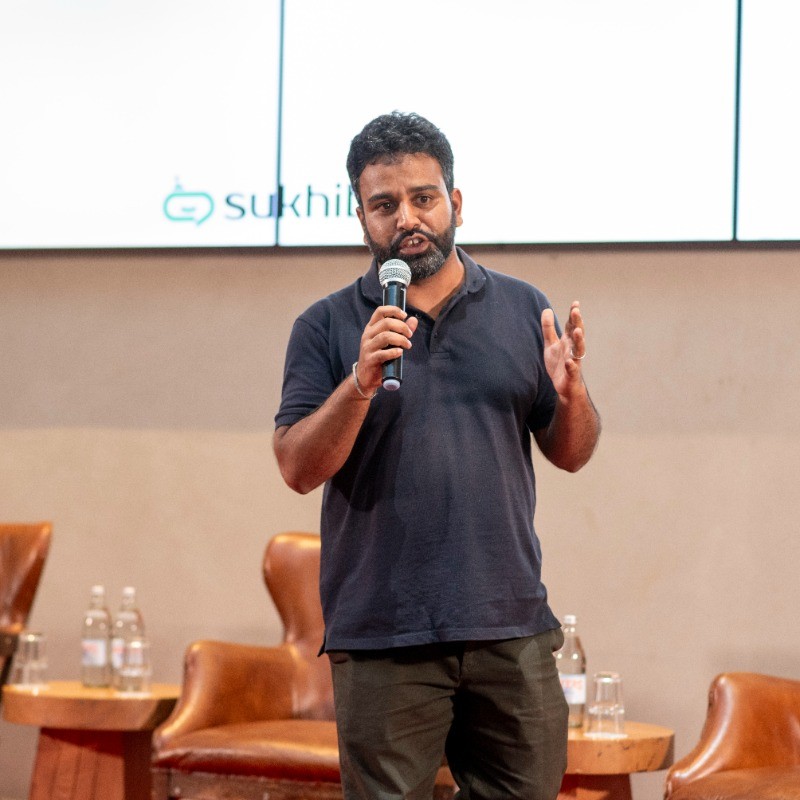Every marketer knows the heartbreak of the almost-sale.
The customer browses. Adds to cart. Maybe even enters their email.
Then, silence.
These silent moments are where revenue quietly leaks away. But they’re also where WhatsApp is rewriting the rules of retargeting. With 98% open rates and direct, conversational engagement, WhatsApp retargeting reminds customers what they’re leaving behind and establishes a relationship.
In this guide, we’ll break down why WhatsApp retargeting campaigns work better than traditional remarketing and provide a step-by-step process for running compliant, personalized campaigns.
Why Businesses Need WhatsApp Retargeting Campaigns
Customers are spending more time scrolling, chatting, and even making purchase decisions on WhatsApp than on any other app in their day. For example, WhatsApp follow-ups can deliver up to 3x more sales. But this is just one reason why your business needs WhatsApp retargeting campaigns.
Here are a few more benefits of having your business on WhatsApp:
1. Overcomes High Cart Abandonment Rates
The global cart abandonment rate is 76.26%, meaning that three out of four shoppers leave without buying. WhatsApp retargeting helps recover these near-misses by re-engaging customers in real time. Instead of hoping they return via email or an ad, you can trigger a WhatsApp follow-up within minutes of their drop-off, while the intent is still fresh.
This way, it becomes easier to remind someone, conversationally, that their order is just one tap away.
2. Delivers Better Engagement than Email Retargeting
Email has been the reigning champion of retargeting for decades, but it's increasingly battling for attention in a cluttered inbox. Marketers are left constantly fighting spam filters, struggling with low open rates, and settling for delayed action.
WhatsApp is a personal, real-time channel that fundamentally changes how customers interact with your messages. Here is the data-backed comparison of why retargeting strategies on WhatsApp deliver superior results:
By shifting retargeting from a formal, ignored inbox to a responsive, personal chat app, businesses can overcome customer avoidance and use immediacy to rescue lost sales.
Additional Read: WhatsApp vs Email Marketing: Which One Wins?
3. Builds Stronger Customer Relationships
WhatsApp retargeting nurtures a deeper, more human relationship between your brand and the customer. Traditional email and display ads simply cannot replicate this connection.
For example, email is often a one-way broadcast: a customer reads a message and clicks a link. WhatsApp, by its nature, is a two-way street. By opening a chat, you invite the customer to ask questions, seek clarification, or even offer feedback in real-time. It removes buying friction instantly and demonstrates genuine customer care.
WhatsApp retargeting also extends beyond addressing customers by their first name. You can reference their specific actions, such as the product they viewed or the past order they might want to restock. This level of granular, context-aware communication makes the customer feel seen and valued.
Put simply, WhatsApp is where customers communicate with friends and family. Your brand benefits from a halo of personal connection when you meet them in this trusted, familiar environment. In the next section, we’ll learn how to set up this process and boost sales on WhatsApp.
The Step-by-Step Process for a Compliant WhatsApp Retargeting Campaign
Running a successful WhatsApp retargeting campaign demands a structured approach, technical setup, and a focus on compliance and personalization. Here are five essential steps to launch and optimize your high-converting retargeting strategies on WhatsApp.
Step 1: Secure Your Platform and Define Audience Segments
WhatsApp retargeting requires a smart platform to identify the exact customer at the perfect moment. This step is about building your foundation with an AI-enabled solution that turns customer behavior into actionable, high-converting segments.
This means you must move beyond the basic WhatsApp Business App to handle automation and segmentation at scale.
- Integrate the WhatsApp Business API (WABA): Use a WABA-based platform (like Flowcart) to enable automation, multimedia content, and high-volume, personalized messaging.
- Ensure Deep Data Sync: Connect your platform to your e-commerce store and CRM. This sync captures real-time customer behavior (clicks, product views, abandoned carts), which the AI will use for segmentation.
Once done, define your audience segment: who you are speaking to for maximum relevance. Flowcart's AI-powered segmentation automatically sorts your audience into precise, high-value groups, ensuring every message has an ROI built in.

Check out the breakdown:
💡Flowcart Advantage: By grouping users based on real actions, you reduce generic broadcast waste and improve campaign ROI, driving an average of 5x higher revenue compared to generic campaigns.
Must Read: WhatsApp Marketing Mistakes to Avoid (And How to Fix Them)
Step 2: Get Proper Opt In and Ensure Compliance
WhatsApp enforces strict rules to protect user experience. Before sending any marketing or promotional message, you must obtain an explicit, compliant opt in. In other words, the customer must clearly understand and agree to receive notifications via WhatsApp.
Here are some opt in methods you can adopt:
- Click-to-WhatsApp (CTWA) ads: Run ads on Facebook and Instagram that lead users directly to a pre-filled WhatsApp chat with your business. This is a highly effective way to acquire compliant opt-ins right from the WhatsApp retargeting ads.
- Offline QR codes: Place WhatsApp QR codes on your physical product packaging, in-store displays, or on receipts. Scanning the QR code initiates a chat, providing a compliant pathway for offline customers to opt in for online updates.
- Checkout Opt-in: Include a checkbox during checkout (unchecked by default) that clearly states the user is opting in to receive order updates and marketing messages on WhatsApp.
Flowcart’s Click-to-WhatsApp (CTWA) Ads help you effortlessly manage these compliance channels to build a high-quality contact list, ensuring your marketing is effective from the first interaction.

Let’s check out how:
📌Pro Tip: Always make it easy for customers to opt out. Include an "Unsubscribe" or "Stop" option in your first message and honor the request immediately.
Step 3: Craft Hyper-Personalized Messages at Scale
A generic message kills the conversation. Since WhatsApp is a personal space, your retargeting messages must feel contextual and valuable to the individual.
Using AI to analyze behavior is crucial for targeting the right segment with the right content. For example, AI can automatically identify that a "Cart Abandoner" frequently buys discounted items, triggering a message that includes a 10% off coupon rather than a generic reminder.
Flowcart’s Smart Broadcasts help you move beyond mass messaging. By using your segmented audience data, every single message sent is a personalized journey designed to drive measurable revenue.

📌Pro Tip: Unlike a formal email, WhatsApp customer re-engagement copy should be brief, friendly, and use clear interactive elements.
How Samaking Drove 50% MoM Growth with Flowcart
Samaking, a fast-growing aquaculture brand in East Africa, used Flowcart’s WhatsApp Broadcasts and Storefront features to unify its customer communication and simplify sales across franchises.
By automating personalized offers and managing all interactions in one shared inbox, Samaking turned WhatsApp into its primary sales engine, driving 50% month-on-month revenue growth and handling 100% of transactions directly through Flowcart.
It experienced faster responses, stronger repeat purchases, and a seamless buying experience that keeps both B2B and retail customers coming back.
Step 4: Use Automation Tools to Deliver in Real-Time

Timeliness is the greatest advantage of WhatsApp retargeting. If a customer abandons a cart, a reminder sent 3 days later is wasted. WhatsApp automation ensures real-time action and an instant path to purchase.
You must set up automated flows to trigger messages based on customer actions (e.g., Trigger: User leaves checkout page ▶️ Action: Send message 10 minutes later).
Flowcart’s AI-Driven WhatsApp Flows automate 100% of your conversations, turning every chat into a dynamic, self-service shopping experience that replicates your best salesperson, 24/7.
Smart attribution and simple testing tools also accurately justify your platform investment and consistently improve performance. For example, every link you send in a retargeting message must use unique UTM parameters (e.g., utm_source=whatsapp). This ensures that when the customer completes the purchase, the revenue is correctly credited back to the specific WhatsApp campaign in your analytics.
📌 Pro Tip: Design your flows to respond to engagement. If a customer reads the first cart reminder but doesn't click, the flow can automatically send a second message 24 hours later with an added incentive to close the sale.
Step 5: Track and Optimize Results

Your work isn't done after the messages are sent. The ultimate advantage of running a smart retargeting engine is the ability to measure everything and use that data to drive continuous growth.
Flowcart's complete-funnel tracking provides real revenue visibility in one dashboard. You can instantly track:
📌Pro Tip: Consider testing different variables or using A/B testing to continuously improve performance. For example:
- Timing: Is 15 minutes better than 30 minutes for cart recovery?
Your team can easily launch and iterate tests across different segments and flows in Flowcart without developer support.
- Incentives: Does a "10% off" perform better than "Free Shipping"?
Smartly re-engaging existing customers with the right incentive lowers your Customer Acquisition Cost (CAC) compared to increasing ad spend.
- Copy/tone: Does a friendly, casual tone convert better than a formal, urgent one?
Use the real-time tracking from your tests to focus only on campaigns that deliver measurable ROI.
By systematically following these steps, you move from simple messaging to a high-powered, automated retargeting engine that turns lost revenue opportunities into meaningful customer journeys.
When done right, WhatsApp retargeting becomes more than a recovery tactic. It turns every missed click into a customer conversation and every message into measurable ROI. If you’re ready to automate this entire journey, try Flowcart for free and see how effortless high-converting retargeting can be.
Also Read: WhatsApp Marketing Cost: Pricing, Factors, and How to Save Money
Types of WhatsApp Retargeting Campaigns (with Examples)
Now that you have the technical foundation, the next step is defining what to send and when. The most effective WhatsApp campaigns are based on customer intent and require hyper-personalized messaging.
Here are the four essential retargeting campaigns to run, complete with high-converting message examples:
Abandoned Cart Recovery
This targets users who showed clear purchase intent but dropped off at checkout. It is your single highest-ROI retargeting campaign.
For example, Nykaa, an Indian e-commerce company that sells a wide range of beauty, wellness, and fashion products, sends personalized abandoned cart recovery reminders with incentives.

Here’s a breakdown of what’s working for them and how you can write similar campaigns for your brand.
2. Abandoned Browse or Product View Retargeting
This campaign addresses customer indecision. It targets shoppers who viewed a specific product or category multiple times but didn't add anything to their cart.
For example, Hues Studio, an Indian brand that creates luxurious items, sent this WhatsApp customer re-engagement-related reminder to reinforce the product's popularity, along with an incentive. This message serves as a gentle nudge to reconsider decisions and use the coupon code to complete the purchase.

Let’s break down why this campaign works:
3. Win-Back or Re-Engagement Campaigns
These focus on customers who have previously bought but haven't engaged in a specified period (e.g., 90 days), aiming to reactivate a high-value segment.
For example, Soch, an Indian women's ethnic-wear brand, sent this message to one of its dormant customers. It’s a great reminder campaign for those who haven’t shopped there in a while, because this message tells us a massive sale is underway, a good reason for anyone to revisit the brand.

Here’s a breakdown of the WhatsApp retargeting message template:
📌Flowcart revolutionizes customer retention by integrating your loyalty program directly into WhatsApp. It allows customers to earn points automatically, check their existing points, and redeem rewards for future purchases or discounts, all within the chat interface. Thus, turning loyalty into a natural, conversational part of the shopping experience.
4. Post-Purchase Retargeting
This campaign type maximizes the Customer Lifetime Value (CLV) of a completed purchase or leverages peak seasonal intent (e.g., Black Friday).
For example, Biba, an Indian ethnic-wear brand, circulated this message as part of its Black Friday sale campaign.

Use this breakdown to understand the campaign:
Best Practices for WhatsApp Retargeting
Adopt these core principles to create respectful, high-converting conversations that align with how customers actually use WhatsApp.
- Personalize every message: Use the customer’s name, referenced products, or past purchases to make every touchpoint feel relevant.
- Time messages strategically: Trigger cart reminders within 15–30 minutes of drop-off to strike when intent is still high.
- Use urgency with care: Apply limited-time offers or expiring discounts only when necessary to prompt action without spamming users.
- Add visual context: Include images, catalogs, and quick-reply buttons to make messages intuitive, engaging, and conversion-friendly.
- Automate first, hand off when needed: Let automation handle initial follow-ups, but route complex questions to human agents to preserve the conversational tone.
- Test and refine constantly: Learn what each segment responds to best through A/B tests on timing, tone, and incentives, and use opt-out rates as a signal for over-messaging.
Why Run Your WhatsApp Retargeting Campaigns with Flowcart
The decision to move your retargeting to WhatsApp is smart, but the platform you choose is critical. You might consider building your own setup using the official WhatsApp Business Platform (WABA) via Meta's tools or perhaps looking at other WABA solution providers.
However, a purely technical setup often results in complex coding requirements and fragmented data.
For example, an OP on Reddit shared their frustrations with working with WhatsApp for their small business.

Source: Reddit
This sentiment highlights the core problem: the basic tools can't handle the demands of a high-volume business. Where basic solutions fail with limited message approvals and the 24-hour window frustration, Flowcart was engineered to solve these exact pain points.
We eliminate the messy juggling act by providing a complete, AI-driven sales engine that lives entirely inside WhatsApp. This means your business can handle bulk messages without being flagged, effortlessly manage broadcast lists, and overcome the limitations of the message window through intelligent, automated Flows that guide the customer from start to finish.
Crucially, Flowcart ensures the entire customer journey, from the first Click-to-WhatsApp (CTWA) ad to the final checkout, occurs within the chat window, eliminating payment integration headaches and providing the proper analytics that the basic API lacks.
Ultimately, running a successful WhatsApp retargeting strategy requires a platform that turns customer data into immediate revenue. Flowcart focuses on three pillars of the customer buying journey: acquisition, conversion, and retention.
Put simply, it delivers the complete toolkit to turn traffic into transactions so that you can focus on growth. Schedule a demo today to see how Flowcart can turn your dormant customer list into a continuous revenue stream.
FAQs
What’s the difference between WhatsApp retargeting & remarketing?
Traditionally, remarketing referred to using owned channels, like email lists, to re-engage known customers, focusing on loyalty and repeat purchases. Retargeting generally meant using paid ads (via cookies) to reach anonymous site visitors. On WhatsApp, the terms merge, as you use direct messaging to re-engage both known customers and recent visitors.
How effective are WhatsApp cart recovery campaigns?
WhatsApp cart recovery is highly effective, significantly outperforming email and SMS due to its high engagement rates. Messages boast near-98 % open rates and are often seen within minutes, translating into higher conversion rates for abandoned carts. Timely, personalized reminders combined with a direct checkout link drive this ROI.
Can small businesses run WhatsApp retargeting without expensive tools?
While small businesses can start with the free WhatsApp Business App, scaling retargeting requires the official WhatsApp Business API via a solution provider. Basic API access can be technical and limited, but platforms like Flowcart bundle the necessary AI and automation features into an accessible, non-code interface.
How do I stay compliant with WhatsApp’s rules while retargeting?
Compliance hinges on explicit user consent (opt in) before sending any marketing message; you must keep a record of this agreement. Additionally, always use pre-approved message templates for any outreach outside the 24-hour customer service window and provide a clear, easy way for customers to opt out.
.png)


.png)
.png)


%201.webp)



